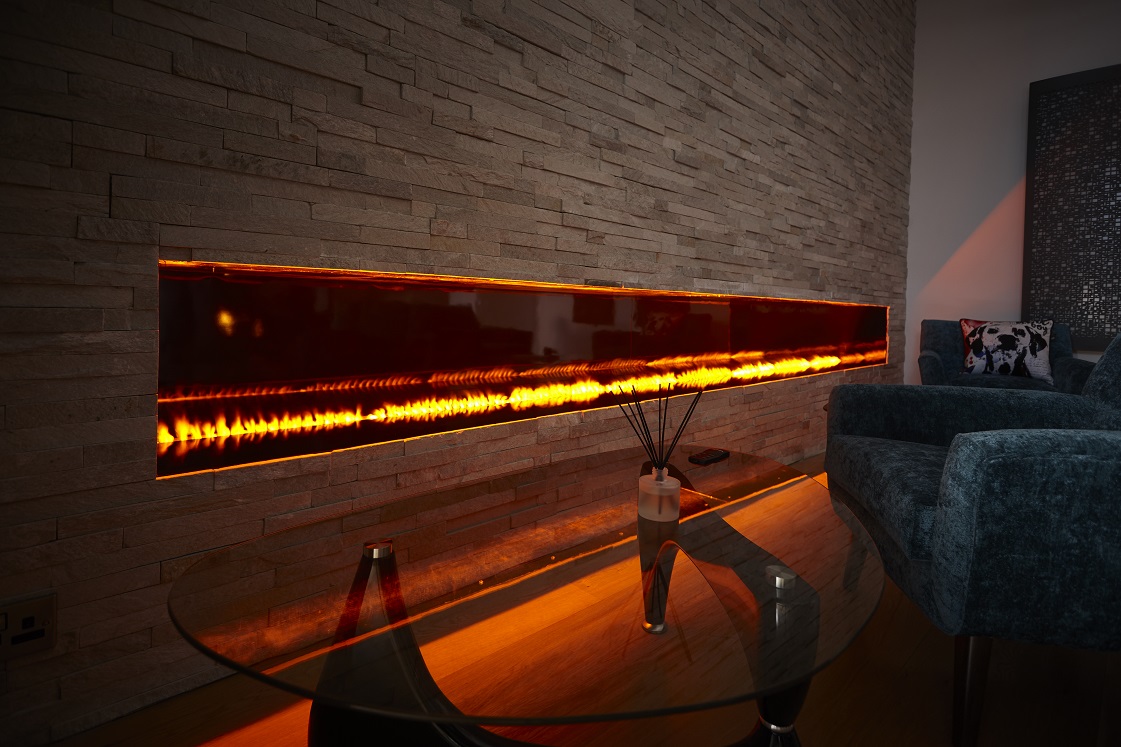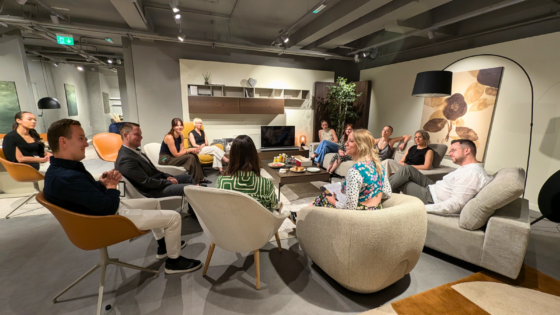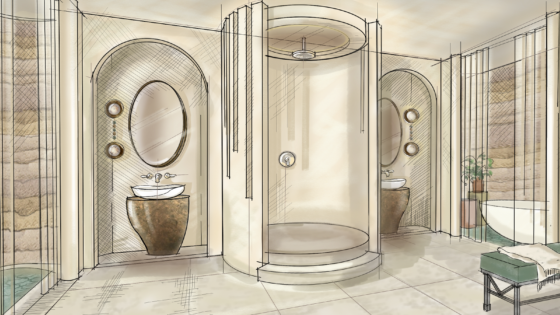Jonathan Smith, product marketing manager – Flame Technology, Glen Dimplex Heating and Ventilation, explains the wellness benefits of incorporating fire in interior design…
Fire has always played an important part in our lives. Evolutionary speaking, it was vital for our development as it provided a source of light, warmth and protection from predators.

Move forward a million years and fire still featured heavily in domestic lives. It provided a social gathering point for families, all heating and lighting, and the ability to cook.
With the innovation of the chimney came the fireplace. Often, these fireplaces were used as a symbol of power and wealth, but still, their main function was to provide heat and warmth, as well as remaining a focal point of the room. With the advent of central heating and cookers, the fireplace was no longer a necessity. However, we find it hard to break our evolutionary ties with fire — it’s something which still gives us a strong sense of well-being.
This is certainly true in the hospitality sector. Hotel lobbies can often be grand and overwhelming spaces, but some hotels do use fireplaces to create a dramatic and welcoming feel. These lobbies are spaces which can either make visitors feel relaxed and welcome, or intimidated and anxious. Obviously, the first emotions are preferable in creating a positive experience for guests — a fireplace can help to achieve this.
Indeed, the hospitality sector is witnessing a trend towards smaller, more welcoming and intimate spaces. Think of it as guests getting more of a ‘living room experience’. Malcolm Berg, founder of EoA, a hospitality design firm, says: “What this means for hotel design, especially hotel lobbies, is more spaces of cross-pollination, spaces that offer a blend of public and private options for people who want to be in a public area but also have their privacy, to spaces where people can gather as a group to eat, dine, work or communicate.” Again, a fireplace can help to create a focal point for people to gather, relax and socialise.
Health benefits of flame
A wealth of evidence exists to support the positive psychological effects of fire. Research scientists in Japan found by investigating alpha brain wave patterns, that watching flame movements helps to improve levels of human comfort and satisfaction.
“The longer people watched the fire, the more relaxed they became.”
Additionally, in a study for the University of Alabama, Dr. Lynn discovered that watching a fire, complete with sound effects, consistently lowered high blood pressure. The longer people watched the fire, the more relaxed they became, and the experience also seemed to make the participants more sociable. This could be related to prehistoric times when keeping a fire going would have been a very important job that required cooperation. Dr. Lynn suggests that because of this, when we’re sitting by a fire, all our senses become absorbed in the experience. This focus of attention could explain our reduced blood pressure and anxiety.
With this ability to make us more relaxed, more sociable and therefore more likely to linger, surely all restaurants and hotels should make fires a focal point within their common areas. However, its not always easy, or even possible to install a real fire in some spaces. And that’s before the potential health and safety issues are even addressed.

The problems with real flame
Fires can enhance the aesthetic appeal of a space. However, in recent research commissioned by Glen Dimplex Heating & Ventilation, 79 per cent of architects and designers stated concerns about using fire and flame within their projects, with health and safety, energy efficiency and cost among their primary worries.
These health and safety concerns are not unfounded. Aside from the obvious issues around installing an open fire in a public space, there are also less obvious threats to health. Burning wood in an open fire releases small particles which can be absorbed by the lungs and enter the bloodstream. Scientists in Italy found that these particulates can lead to dangerous heart problems and King’s College, London has found a link to particulate pollution and Alzheimer’s. Asthma is another health problem made worse by wood combustion.
So, while fires may help us psychologically, do these benefits outweigh the physiological issues to our health?
Mitigating the negatives with flame technology
One way to alleviate the concerns posed by fire, while still achieving the desired psychological benefits, is through the use of electric flame technology. Modern electric fires provide all the same effects as real flame — a focal point for any room and they go a long way towards creating the right atmosphere for a space, making it welcoming and hospitable.
Three-dimensional flame technology gives such a believable illusion that the same state of relaxation and comfort can be achieved as with any real fireplaces. However, because there is no combustion, there are no open flames and no particulates produced — meaning health and safety concerns are no longer a worry.
Another benefit of electric flame technology is that these fires are quick and easy to install. They don’t need a working chimney or flue or create any heat; they can be installed in any space and used all year round to add ambience, character and a welcoming feel to any space.
Electric flame for the future
When fire was first “invented”, it played a very simple role; it was a lifeline. You needed a fire for warmth, for safety, to cook, to live. Today, the concept of a fire or fireplace isn’t any of these things as they’ve all become secondary function nice-to-haves. And yet, when we see a fire, we feel warm and not just in the physical sense.
While electric flame effects do not provide a living flame, the cost, safety, and flexibility benefits considerably outweigh this. They add ambience and warmth; allowing hoteliers and restaurateurs to put their own creativity and style into a space that will be enjoyed, and remembered, by many, now and in the future.




